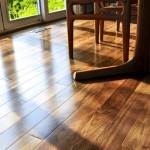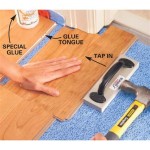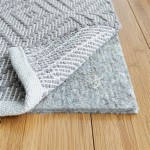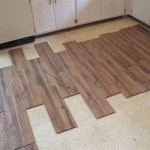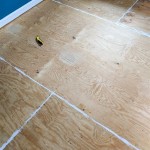Essential Aspects of Subfloor Sealing
Ensuring the stability and longevity of your flooring system starts with a properly sealed subfloor. A sealed subfloor acts as a protective barrier, preventing moisture damage, sound transmission, and pests from compromising your flooring and the structural integrity of your home.
Why Seal a Subfloor?
Subfloors are typically made of wood or plywood and are susceptible to water damage, rot, and warping. Sealing the subfloor creates a moisture barrier, protecting it from spills, leaks, and high humidity. Additionally, sealing the subfloor reduces sound transmission, resulting in quieter rooms. It also helps deter pests like termites and carpenter ants from nesting or burrowing within the subfloor.
Materials for Subfloor Sealing
The ideal sealant for your subfloor depends on the type of material it's made of and the level of protection required. Common sealants include:
- Polyurethane: Durable and water-resistant, suitable for both wood and concrete subfloors.
- Acrylic-based: Flexible and easy to apply, ideal for wood subfloors.
- Epoxy-based: High-strength and chemical-resistant, commonly used in commercial and industrial settings.
Preparing the Subfloor for Sealing
Proper preparation ensures optimal performance of the sealant. Before applying the sealant, thoroughly clean the subfloor, removing any dirt, debris, or old coatings. Allow the subfloor to dry completely before proceeding.
Applying the Sealant
Follow the manufacturer's instructions carefully when applying the sealant. Typically, you would apply the sealant using a roller or brush, ensuring even coverage. Allow the first coat to dry thoroughly before applying additional coats as needed. Depending on the sealant used and the porosity of the subfloor, multiple coats may be required to achieve desired protection.
Drying and Curing Time
Allow sufficient time for the sealant to dry and cure before installing flooring or walking on the sealed subfloor. The drying and curing times vary between different sealants, so refer to the manufacturer's instructions for specific recommendations.
Additional Tips for Sealing Subfloors
- Use a respirator and gloves when working with sealants to avoid inhaling fumes.
- Ventilate the area well during and after application to prevent indoor air quality issues.
- Test the sealant in an inconspicuous area to ensure compatibility with the subfloor material.
- If you are unsure about sealing your subfloor yourself, consider hiring a professional contractor.
Conclusion
Sealing your subfloor is a crucial step in maintaining the integrity and longevity of your flooring system. By choosing the appropriate sealant, preparing the subfloor properly, and following application instructions precisely, you can prevent moisture damage, reduce noise, and protect your home from pests. A well-sealed subfloor provides a solid foundation for your flooring, ensuring years of trouble-free enjoyment.

How To Repair Seal Your Subfloor Why You Might Need

How To Repair Seal Your Subfloor Why You Might Need

How To Patch Subfloor Sawdust Girl

Diy Plywood Floors Part 2 How To Stain And Seal

How To Use Seal Spray Foam Sub Floor And Construction Adhesive

How To Waterproof A Floor The Home

How To Patch Subfloor Sawdust Girl

Subflooring Secrets To A Quiet Floor Subfloor Construction

Repairing And Waterproofing Basement Subfloor Sani Tred

How To Finish A Plywood Subfloor
See Also
